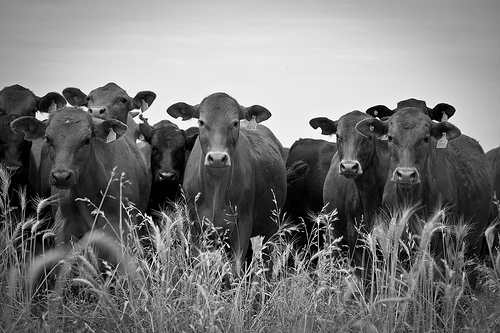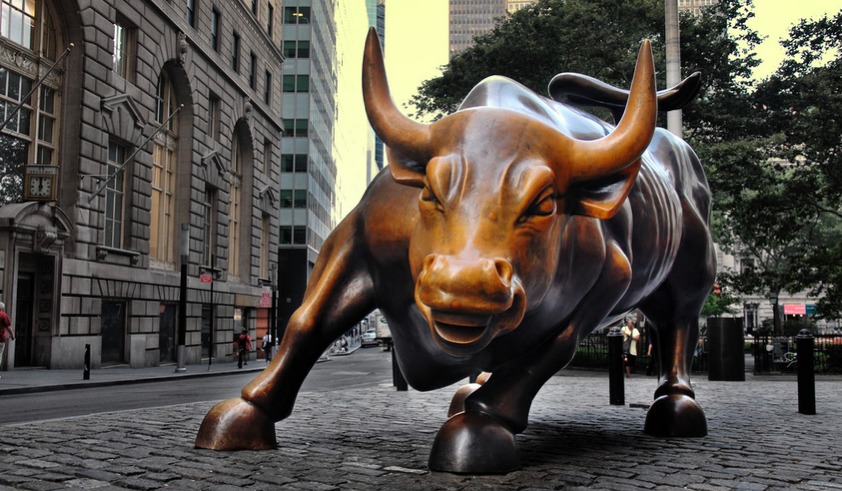In the spirit of Fat Tuesday let’s revisit one of the biggest market stories of early 2014 — the rally in commodities, particularly food prices.
For example, U.S. lean-hog futures rose to all-time highs this week and coffee prices are on a rampage after a multi-year decline.
iPath Dow Jones UBS Livestock ETN (COW)
Elsewhere in soft commodities, corn and wheat have gotten a bump lately from weather events and concerns over tensions between Russia and Ukraine.
These rising prices could squeeze profit margins for food, beverage and restaurant stocks, which were solid performers last year as a group. The companies may have a hard time passing along higher costs to strapped consumers.
Yet global equity markets rebounded Tuesday and commodity prices cooled a bit after Russian President Vladimir Putin recalled forces engaged in military exercises in central and western Russia.
Grain prices rallied Monday and a broad commodities index climbed to the highest mark in nearly six months. The stand-off between Ukraine and Russia stoked investor worries that agricultural supplies would be disrupted across the globe, but those fears receded somewhat on Tuesday.
Still, commodity investors and companies affected by rising food prices will keep an eye on the situation in Ukraine, which is a big corn exporter, No. 3 after the U.S. and Brazil. It’s also the sixth-largest producer and exporter in wheat.
Investment bank Macquarie is forecasting that the political turmoil will lower Ukraine grain production (corn and wheat) by 16% compared to 2013. That in turn will put pressure on U.S. grain supplies, push prices even higher and feed into the operating costs of global food companies. As Kona Haque, head of agricultural commodities research at Macquarie, told the Telegraph:
“Ukraine is very important and by some counts it is already the second-largest grain exporter. Prices are rising but maybe a little more than they would normally because of the political risk. There is a premium attached to Ukrainian grain exports right now, which puts the pressure back on the U.S.”
Compounding the impact of Ukraine’s woes are a severe heat wave in Brazil and below-average temperatures in North America.
Therefore, the stage could be set for higher food prices in the coming year. Higher commodity prices and resulting lower consumer demand may be bad news for food companies that haven’t hedged their supply costs.
The all-food component of the Consumer Price Index was forecast to rise 2.5% to 3.5% in 2014, according to the U.S. Department of Agriculture’s Food Price Outlook issued Feb. 25.
What does this mean for food and beverage stocks? Coffee stocks such as Starbucks (SBUX) have been under pressure due to Brazil, which accounts for as much as one-third of the world’s total coffee supply today.
Raw milk prices are soaring, thanks to a big increase in Chinese demand from consumers, who are worried about the safety of domestic milk products. Dean Foods (DF), the largest U.S. dairy processor, warned of a first-quarter loss because of the higher prices.
Annie’s (BBNY), a natural and organic food company, recently offered lower earnings guidance and has seen its stock tumble this year thanks to higher commodity costs.
In a conference call with analysts, Annie’s Chief Financial Officer Zahir Ibrahim blamed “organic wheat inflation and tight supply conditions” as one reason for the company’s lowered earnings outlook.
For investors who might want an active approach to investing in food and beverage-related stocks, Scott Rothbort manages the Restaurant and Food Chain portfolio on Covestor.
Photo Credit: Alex E. Proimos
DISCLAIMER: The investments discussed are held in client accounts as of February 28, 2013. These investments may or may not be currently held in client accounts. The reader should not assume that any investments identified were or will be profitable or that any investment recommendations or investment decisions we make in the future will be profitable. Past performance is no guarantee of future results.





